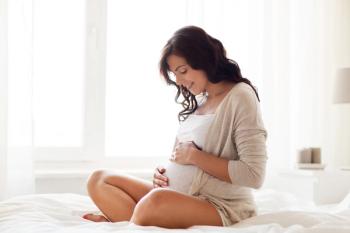
Assisted reproductive technology increases childhood cancer risk
A recent study has associated the use of assisted reproductive technology in birth with an increased chance of developing childhood cancers.
Birth through assisted reproductive technology (ART) has a greater chance of leading to childhood cancers than natural births and subfertility births which do not use ART, according to a recent study.
Over time, a greater number of infants have been born through ART, with about 1 in 20 infants in Taiwan being born with the help of ART in 2018. However, increased risk of cancer has been associated with children born to parents with epigenetic alterations or going through infertility treatment.
Investigators conducted a population-based cohort study, retrieving data from the Maternal and Child Health Databasebetween January 1, 2004, and December 31, 2017. This data held 99.78% of parents-child triads in Taiwan, stemming from 6 national administrative databases.
Children born through sperm or oocyte donations;those born with a parent aged less than 20 years; a parent with a recorded drug, alcohol, or tobacco addiction; a parent lacking medical records before coming to Taiwan; or an older sibling born in the same year were excluded.
Children were classified into 3 groups based on conception: natural conception, subfertility and non-ART, and ART. For ART classification children had to meet 3 criteria: one parent with an infertility diagnosis, a clinical pregnancy recorded following ART, and a birth date within 290 days after transfer. An infertility diagnosis with no history of ART in parents classified their children with infertility but no ART.
All 3 groups were tracked from birth until development of cancers, death, the end of the follow-up period, or until they met any of the exclusion criteria. Cases of cancer were taken from the Taiwan Cancer Registry, which has been proven to have high accuracy and completeness.
Over 2 million parents-child triads were included in the study. About 52% of children were boys, about 48% girls, about 97% singleton, about 8% born preterm, and about 7% born with low weight. ART saw the highest rates of multiple gestations, low birth weight, and preterm births. Parents of these children were more often older, living in urbanized areas, and had a higher household income.
Of the children examined, 1880 were identified with incident childhood cancers. The ART group saw the highest rate of childhood cancers, while natural conception saw the lowest rate of cancer, leukemia, and hepatic tumors. Retinoblastoma also had a higher incidence rate in children born through ART.
Childhood cancers, leukemias, and hepatic tumors all had an increased risk in children exposed to ART, showing a significant increase compared to a nonsignificant difference between non-ART infertility and natural conception. There were no changes in other types of cancers based on method of conception.
Source of infertility and child sex did not affect rate of childhood cancer, but fresh embryos were assorted with cancer risk compared to frozen embryos. Preterm birth and low birth weight were noted as potential mediators, as they were associated with ART conception and non-ART conception, along with increased risk of childhood cancers and hepatic tumors. However, mediation was not observed in these factors.
The results of this study suggest that use of ART correlates with childhood cancer, while subfertility does not correlate with childhood cancer. Use of ART increased cancer risk compared to both natural birth and subfertility non-ART birth.
This article was originally published by our sister publication Contemporary Pediatrics.
Reference
Weng S, Huang Y, Huang Y, Li Y, Chien L. Assisted reproductive technology and risk of childhood cancers. JAMA Netw Open. 2022;5(8):e2230157. doi:10.1001/jamanetworkopen.2022.30157
Newsletter
Get the latest clinical updates, case studies, and expert commentary in obstetric and gynecologic care. Sign up now to stay informed.




